How to Grow Watermelon for Beginners
Get our best tips on How to Grow Watermelon for Beginners so you can add this sweet fruit to your backyard garden this summer. From planting to harvesting and everything in between, you will be able to setup a growing area for your vines and plants.
Gardening 101 tips for growing all the things, including watermelon, and knowing how to grow them successfully right outside your kitchen door.

What could be better than enjoying a sweet watermelon on a hot summer day? There’s not much that I can think of except for enjoying one that’s been grown in your own garden. People love watermelon; adults, kids, and even chickens love it, and occasionally, a goat will even grab a nibble.
Once your plants grow to maturity, you can enjoy fresh watermelon all summer to help beat the heat and add a bit of sweetness to any dinner. Watermelons are 92% water, which makes them the perfect refreshment on a hot day, and the rinds are a great treat to give to your chickens and other livestock.
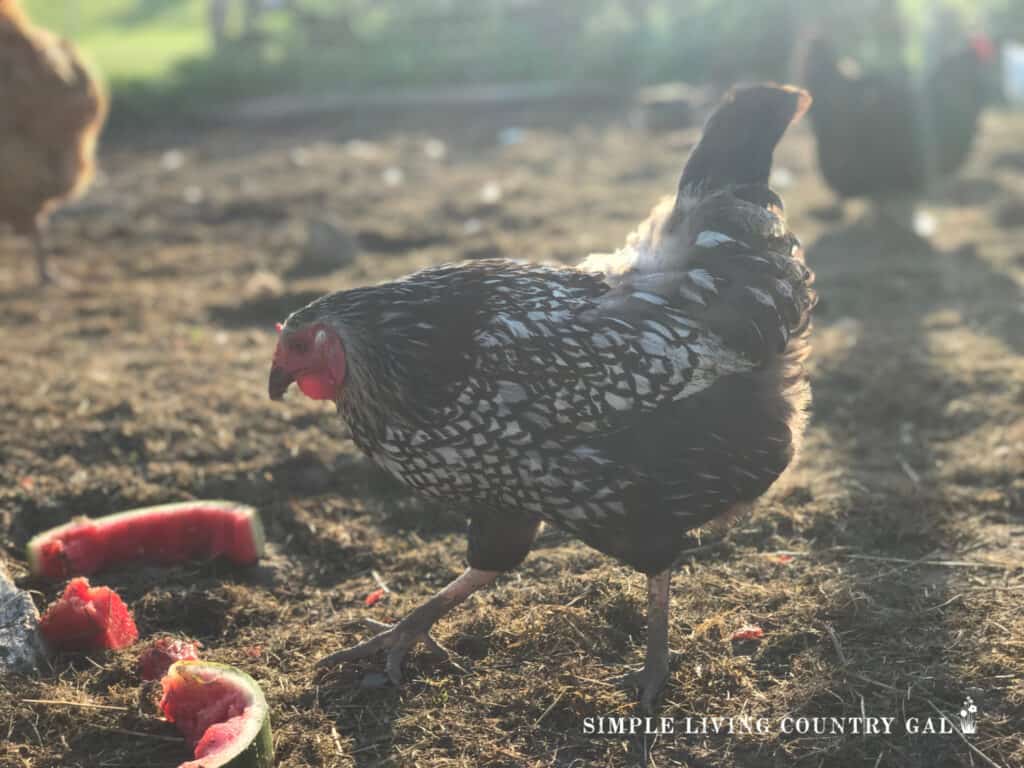
It may surprise you to know that watermelons are native to Africa, where they were first used not as a source of food but as a source of water. The thick rind allowed for them to be stored for long periods and transported without damage as a water source in the desert climate.
Fun fact: Watermelons (Citrullus lanatus) have been cultivated for over 4,000 years. Seeds and paintings of watermelons were even found in King Tut’s tomb.
The fruit started to make its way through the Mediterranean region, into Europe, and then to the U.S. In addition to the flesh, the seeds make a popular snack in other parts of the world, and even the rind is edible.
How to Grow Watermelon for Beginners
Like other melons, watermelons grow along the ground on vines and come in various sizes. Your local store may only offer a few varieties, so by growing them in your home garden, you will be able to experiment by growing a few lesser known varieties.
There are several watermelon varieties available; some of the most common to choose from include:
· Congo – This large variety is big enough to feed a crowd. It has a high sugar content that makes it very sweet and can grow as large as 30-40 lbs when fully ripe. Plants grow 15-24 inches tall with vines that spread 72-96 inches. They also have good resistance to some pests.
· Sugar Baby – This compact variety is a heavy producer and thrives in small gardens. The melons are small and round. The sturdy rinds are resistant to cracking, and the plants are resistant to blight. Melons weigh about 12 lbs, and plants grow to 15-24 inches tall with 6–8-foot vines. This variety does better in cooler weather than other varieties and matures quickly in about 75 days.
· Moon and Stars – The dark green rind with bright yellow spots resemble the sky with the moon and stars. This variety averages about 25 lbs at full maturity and is very sweet. Plants grow 15-24 inches tall with vines that spread about 72-96 inches and will mature in about 100 days.
· Black Mountain – If you live in a region with shorter, cooler summers, this is the variety for you. It can tolerate cooler temperatures and matures in about 70 days with a large, sweet melon.
· Golden Midget – This variety is also a good choice for Northern gardeners, especially those with small gardens. The fruit is small, about 3 lbs, with yellow skin and pink flesh and matures in about 70 days.
Gardeners Basics, Watermelon Seeds for Planting – Crimson Sweet Heirloom Variety, Non-GMO Fruit Seed – 2 Grams of Seeds Great for Outdoor Garden


What is the best way to plant watermelon in a garden, by seed, bulb, or plant?
Watermelon plants are usually started by placing seeds directly into the soil. In cooler climates with shorter growing seasons, you can start the seeds indoors 2-3 weeks before the last frost to give you a bit of a head start. Once the seedlings are ready, you can then transplant them into your garden about two weeks after the last frost or when the soil has warmed up to at least 65° F.
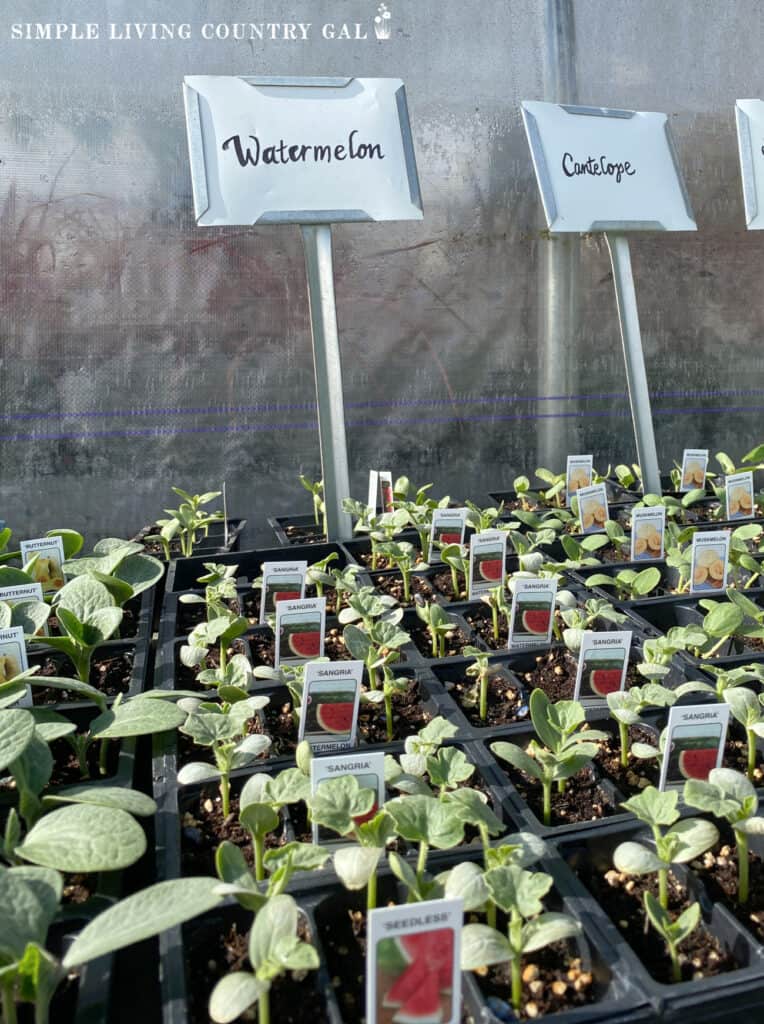
In warmer climates with a longer growing season, you can sow the seeds directly into the ground a week or two after the last frost and when the soil has warmed up to 65° F.
What You Need to Grow Watermelon
When planting watermelons, you’ll want to plan ahead to determine the amount of space needed and the best planting times for your area.
#1. Check the seed packet for your chosen variety to see how many days it needs to reach maturity. This can determine when you plant so you have your harvest ready to pick at the right time.
#2. Choose a spot where your watermelon vines can spread out. Vines grow along the ground and need room to spread. The average space needed is about 20 square feet per plant, less for smaller varieties.
#3. Choose an area that receives plenty of direct sunlight; the more sun, the sweeter the fruit and the larger and fuller they grow.
Can you grow watermelonS in containers?
Yes, you can grow watermelons in containers, and it might surprise you to find they do quite well in a confined area. Grow bags are a great option for growing plants when you are short on space, and each year, I add a few more to our own setup.
JNYONG 12-Pack 10 Gallon Thickened Non-Woven Grow Bags, Aeration Fabric Pots with Handles


To ensure you have enough room for the roots to grow, use a grow bag or container that is at least 10 gallons in size with 15 gallons being the best sized option.

When to Plant Watermelon
Before planting, the soil will need to reach at least 65° F, and you will need to plant after the last frost. Check the number of days to maturity for the variety you select to determine if you want to start the seeds indoors or sow directly in the ground.
No room for a full garden? Grow your watermelon right outside your back door using straw bales. Growing in bales is one of my go-to garden setups because it is easy to prep, is easier on my back, and works amazingly well!
Straw Bale Gardening Resources:
- How to Prep Bales for a Straw Bale Garden
- Straw Bale Gardening for Beginners
- How to Grow Herbs in a Straw Bale Garden
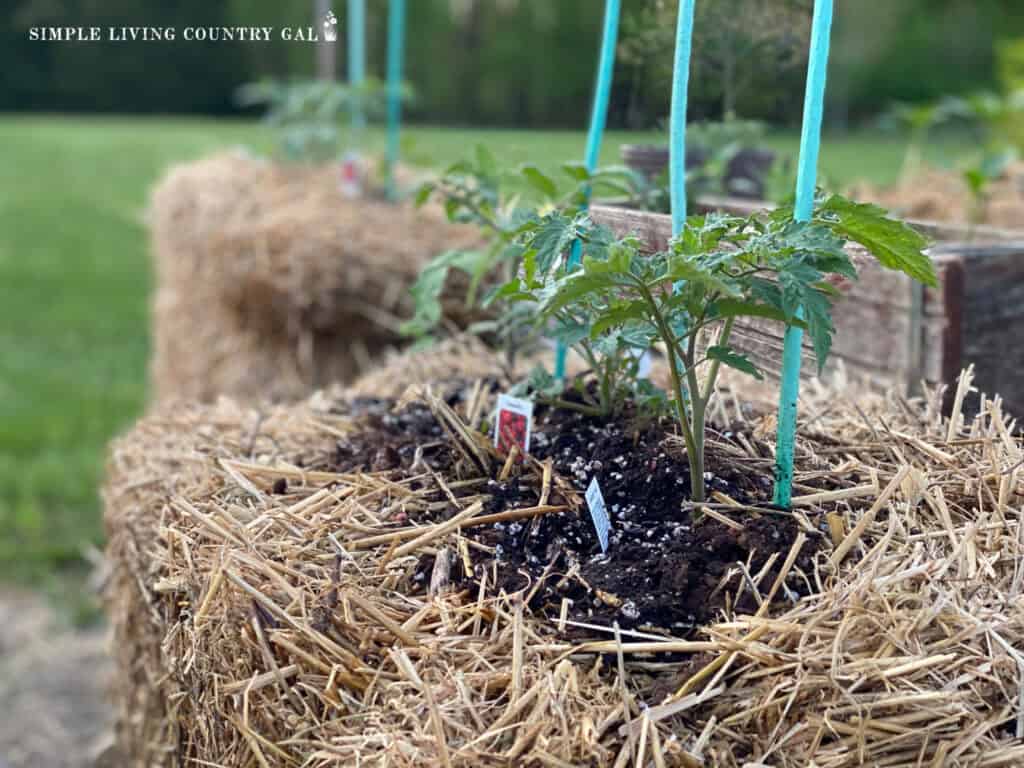
Temperature
The soil needs to be at least 65° F for the seeds to germinate, but the warmer, the better. If you can wait for your soil to warm up to over 80° F, 95° F is the ideal soil temperature. Hot summer days are a watermelon’s best friend.
Sun
Watermelon needs plenty of direct sunlight to grow to healthy maturity and become deliciously sweet. 8-10 hours of direct sunlight a day is preferred. That and warmer temperatures make the summer season the perfect time for growing watermelon.
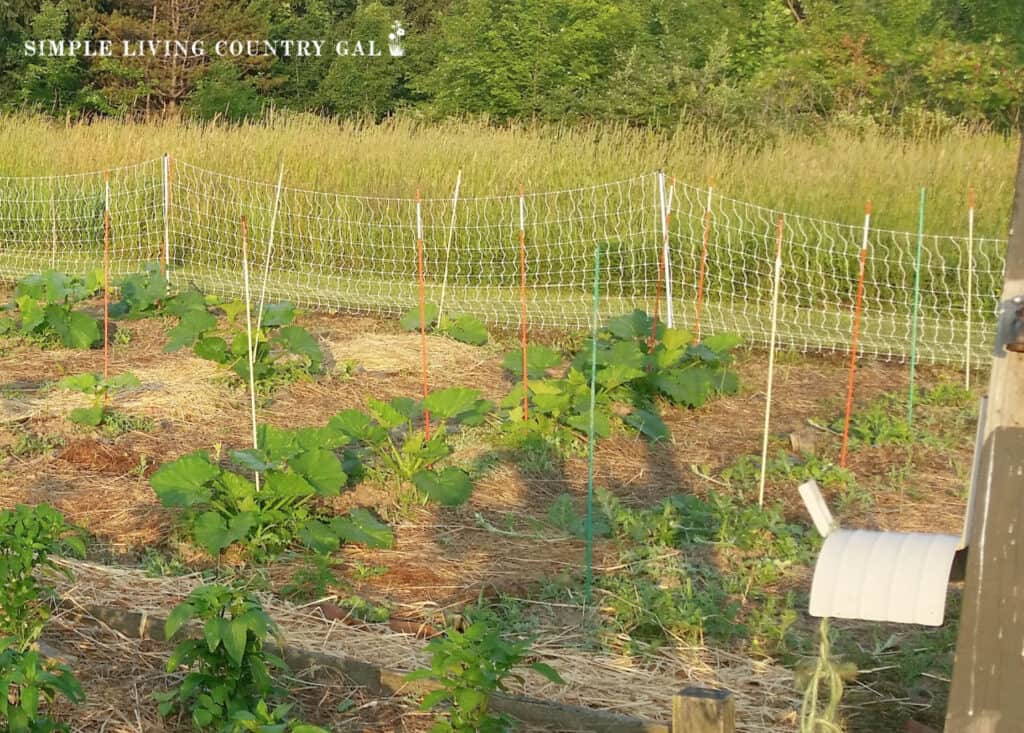
Soil
The soil will need to be moist but not soggy, so well-draining sandy soil is best. It should be able to retain some moisture. Watering your planting area after a few hours of sowing seeds will help them germinate. Also, you’ll need to do a soil test to find your soil’s pH level. Watermelon prefers a pH of 6.0 – 7.5.
If your soil is too hard, you can either amend it with compost or consider planting in raised beds with a mixture of garden soil and sand.
Whether planting in the ground or in a raised bed, work compost into the soil at about 50-100 lbs per 1000 sq ft to improve the soil’s structure.
Water
Water is key to a healthy harvest; you’ll want to water just enough without overwatering. Keep an eye on the soil and water if it gets too dry. In the beginning, while the seeds are germinating, this may mean watering daily to help them thrive. Stick your finger into the soil about an inch deep to determine if it needs water.
Once the seedlings start to grow, you can water a little less frequently but still consistently. Plan on providing the plants with 1-2 inches of water a week. Even watering is important to keep the fruits from cracking as they ripen.
GREEN MOUNT Watering Wand, 24 Inches Sprayer Wand with Superior Stainless Head, Perfect for Hanging Baskets, Plants, Flowers, Shrubs, Garden and Lawn




Fertilizing
Before planting, add some fertilizer to your soil. Refer to your soil test to determine the type of fertilizer you’ll need; it will help you determine any nutrient deficiencies and offer recommendations for your particular soil.
Working compost into your soil before planting will provide a good slow-release fertilizer. Once the plants are established, you can side-dress them monthly with an all-purpose fertilizer.
Compost Resources:
Support
Watermelon grows best along the ground as the fruit becomes very heavy. However, in a small garden, you can grow smaller varieties on a trellis or other support system.
Just be sure to reinforce the trellis by attaching it to the wall or fence; otherwise, the watermelon will pull it down from the weight.
How Much to Plant
Plan on 2-6 plants per person, depending on the variety you choose and how often you plan to enjoy it. Watermelon doesn’t store well for long, so it’s best to enjoy it while you can.
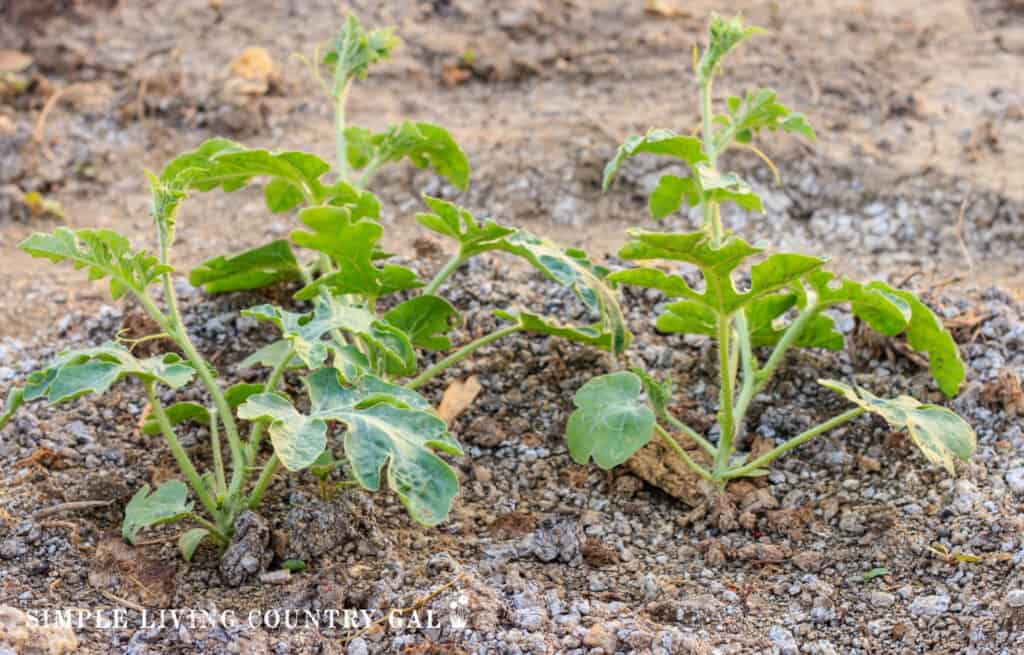
How Long Does Watermelon Take to Grow?
Different varieties grow at various times, but most will be ready to harvest in 70-100 days.
How to Plant Watermelon
After preparing your soil with compost and watering, mound up areas of soil for planting. Hills should be about 3-6 feet apart and no more than 12 inches high. Scrape about an inch of soil off the top, place 3-4 seeds in the soil, press them down, replace the scraped-off soil on top and pat it down gently. Growing in mounds will provide the vines with a little extra room to spread out.
Give the seeds a gentle, light watering after planting. A watering wand or a watering can work well. Seedlings should begin to germinate in 5-10 days.
After the seedlings sprout and are a few inches tall, thin them out to no more than 2 sets of plants per planting area.
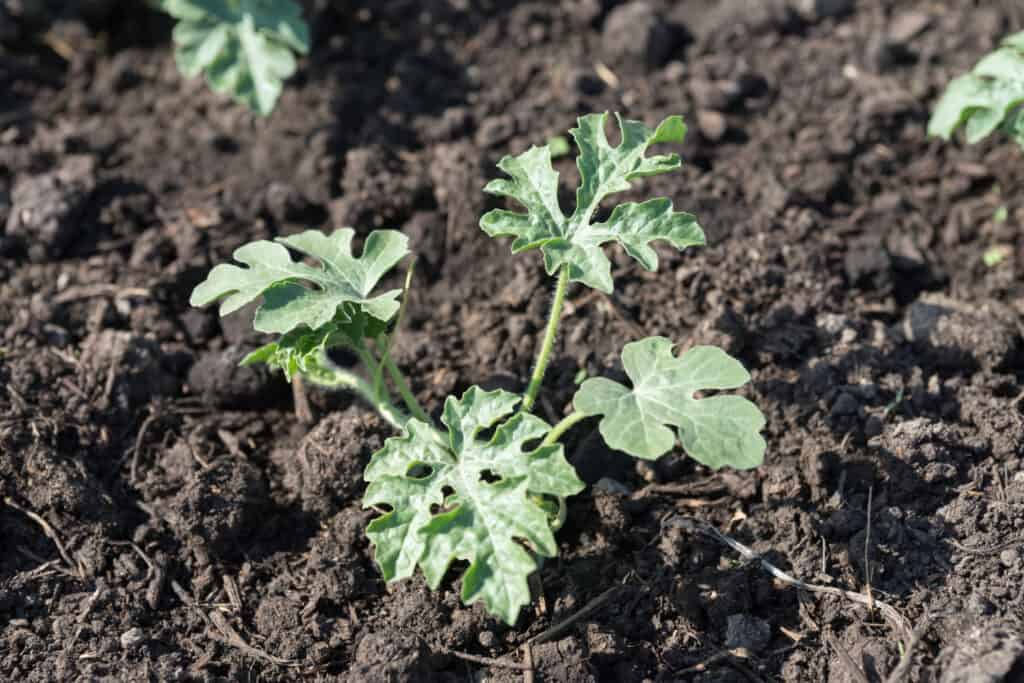
Watermelon can be planted from seedlings started indoors if your growing season is shorter, but the plants have delicate roots and generally don’t like to be transplanted. Replant with care.
For best results, start seedlings in biodegradable peat-free pots, this will allow you to plant the pots directly in the soil without disturbing the roots. A 3-inch pot is an ideal size.
When planting the seedlings, plan on planting two seedlings per hill. Trim the rim of the pots so that they’re even with the soil level inside, then dig a hole in the hill that the pot will fit into. You’ll want the pot to be to a depth of soil level. Backfill with soil, then gently water the transplants.
Spacing
Planting mounds should be spaced about 3-6 feet apart with 3-4 seeds planted per mound, then thinned to 2 plants once they germinate.
Depth
Seeds should be planted about ¾ to 1 inch deep.
Growing Tips for Watermelon
· When creating planting mounds, remember that vines can grow up to 10 feet in length. Space your mounds with plenty of room for the vines to spread out. Smaller varieties can be planted closer together.
· When the plants are about a week from maturity, withhold watering. This will help the fruits become sweeter. You can calculate the maturity date based on the average number of days to maturity listed on the seed packet and the date you planted. In the end, less water will create more concentrated sugars in the melons.
· Water at ground level to avoid getting the foliage too wet. This can cause disease to spread.
· Mulching around your plants can help the soil retain more moisture on hot days and keep the roots from drying out. It can also help to prevent weeds.
· If weeds do sprout up, remove them carefully so that you don’t disturb the roots for the plants.
· Mulching placed under the fruit as its ripens will also help to prevent it from rotting.
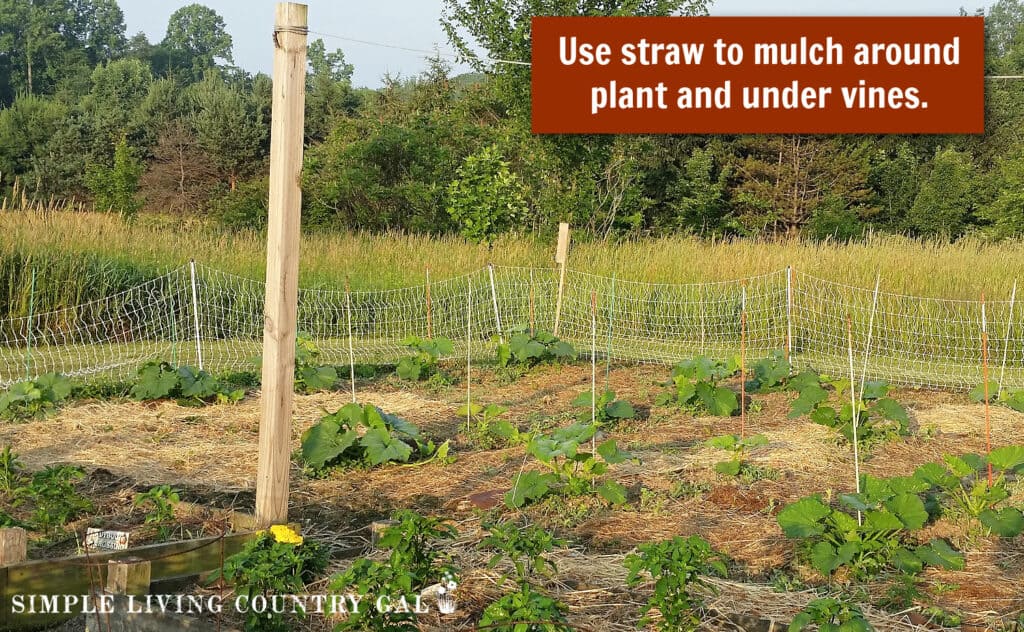
· Watermelons prefer warm weather, but it can sometimes be too hot. Preferred temperatures are 70-90° F during the day and 60-70° F at night. If temperatures are warmer, place straw under your plants to keep the soil cool. The light color will stay cooler than dark mulch.
How to Harvest Watermelon
Watermelon will not continue to ripen after harvesting, so it’s important to wait until the melons are fully ripe before picking. But they can also go from unripe to spoiled very quickly as they get close to maturity, so be sure to check them daily once they start to get large.
If the fruit separates from the vine or the vine is dead, go ahead and harvest the melon, it won’t ripen anymore.
When preparing to harvest, there are a few things you can look for to see if the melon is ready:
· If the curly tendril near the stem turns brown and dry, the fruit is ready. The leaf closest to that tendril should also be yellow or turning brown.
· Check the underside of the melon. It will turn from light green or white to yellow or cream-colored when it’s ripe.
· The skin on the melon will turn from shiny to dull.
· The blossom end of the melon will soften.
Many people like to thump a melon, but this method can be unreliable. A dull thud is supposed to indicate a ripe fruit, but that isn’t necessarily the case with all varieties. With some varieties, a dull thump indicates over ripeness.
When the fruit is ready to harvest, use a sharp knife to but the fruit off the vine leaving a 2-inch-long piece of stem. Handle it gently to avoid bruising or damage.
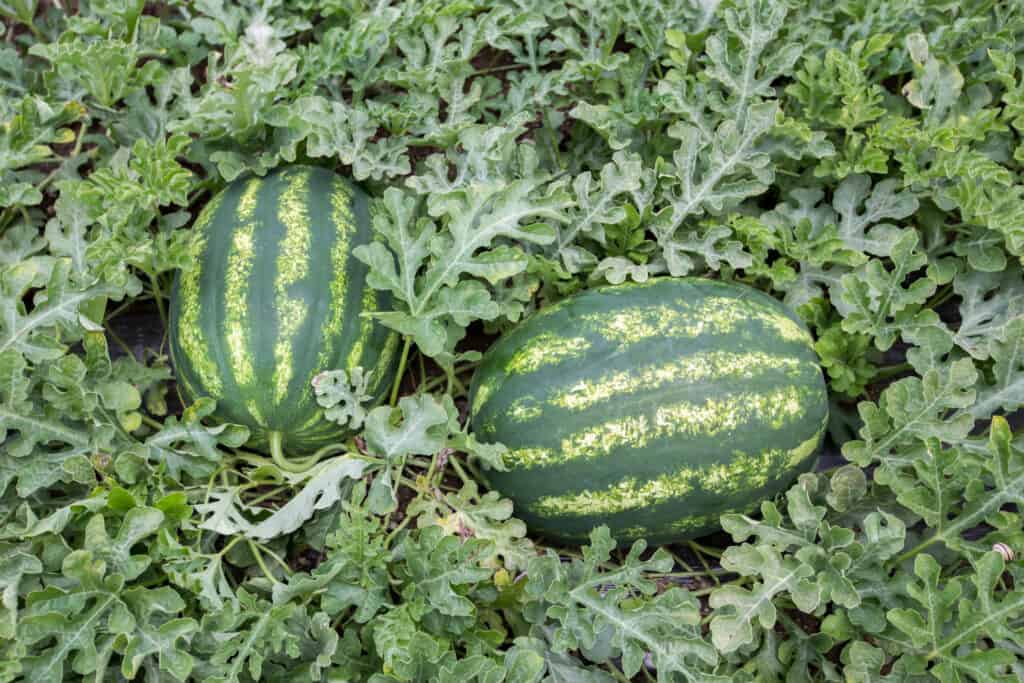
How to Store Watermelon
If the melon is split or cracked, it should be used immediately. If it’s not damaged, it will last 7-10 days when stored at room temperature or up to 2 weeks in cooler temperatures (like a cellar) with high humidity. Don’t store it in the refrigerator unless it’s been cut; it will be too cold. Once cut, it can be stored in an airtight container in the refrigerator for up to 5 days.
Diseases and Pests to Watch Out For
· Melon aphids and spider mites can be seen on the undersides of the leaves. Spray them off with a hose.
· Cucumber beetles can be prevented with floating row covers until they start to flower.
· Too much watering can cause root rot, and other diseases can be spread by splashing water, so water close to the soil and don’t handle plants when wet.
Be sure to rotate your crop every three years to help prevent disease from remaining in the soil.
Watermelon is the perfect refreshment on a hot summer day and even better when it comes straight from your garden. Since it’s so easy to grow, it’s the perfect addition to a beginner’s backyard garden.
Now that you know how to grow watermelon, you can add another plant to your kitchen summer pantry.
Other How to Grow Resources:
- How to Grow Pumpkins for Beginners
- How to Grow Strawberries for Beginners
- How to Grow Chili Peppers for Beginners
How to Grow Watermelon
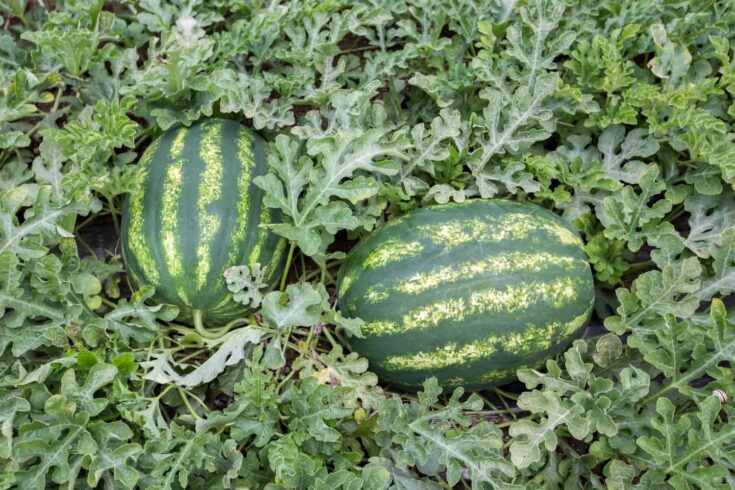
All the steps you need to grow fresh organic watermelon in your own backyard. Add this sweet fruit to your backyard gardening area this summer that will taste sweeter than anything you can purchase in a store.
Materials
- Watermelon Seeds
- Grow Bag (if container gardening)
- Potting Soil
- Fertilizer
Tools
- For Direct Sewing:
- • Rake - for mound prep
- • Hand Trowel - for planting
- • Watering system
- For Seedlings:
- • Seed flat
- • Peat growing pods
- • Indoor warm growing area
Instructions
Seed Starting
1. Set up growing containers for planting.
2. Add soil, peat, or a peat pod to each container.
3. Add one seed per container and cover with a thin layer of soil.
4. Water and place in a warm sunny area or under a grow light.
5. Water daily.
6. Plant seedlings in the ground at the proper time. Soil temp of 70 C is recommeneded.
Direct Sewing
1. Use a rake to make mounds in your growing area.
2. Hills should be 3-6 feet apart and no more than 12 inches high.
3. Place 3-4 seeds in the soil and press down gently.
4. Cover with soil.
5. Water gently and daily until germination at 5-10 days.
Harvesting
1. Watermelon will not continue to ripen after harvesting, so it’s important to wait until the melons are fully ripe before picking.
2. When the fruit is ready to harvest, use a sharp knife to but the fruit off the vine leaving a 2-inch-long piece of stem.
Notes
Watermelon can be grown in a traditional garden, in raised beds, straw bales, or in grow bags.
Recommended Products
As an Amazon Associate and member of other affiliate programs, I earn from qualifying purchases.


















